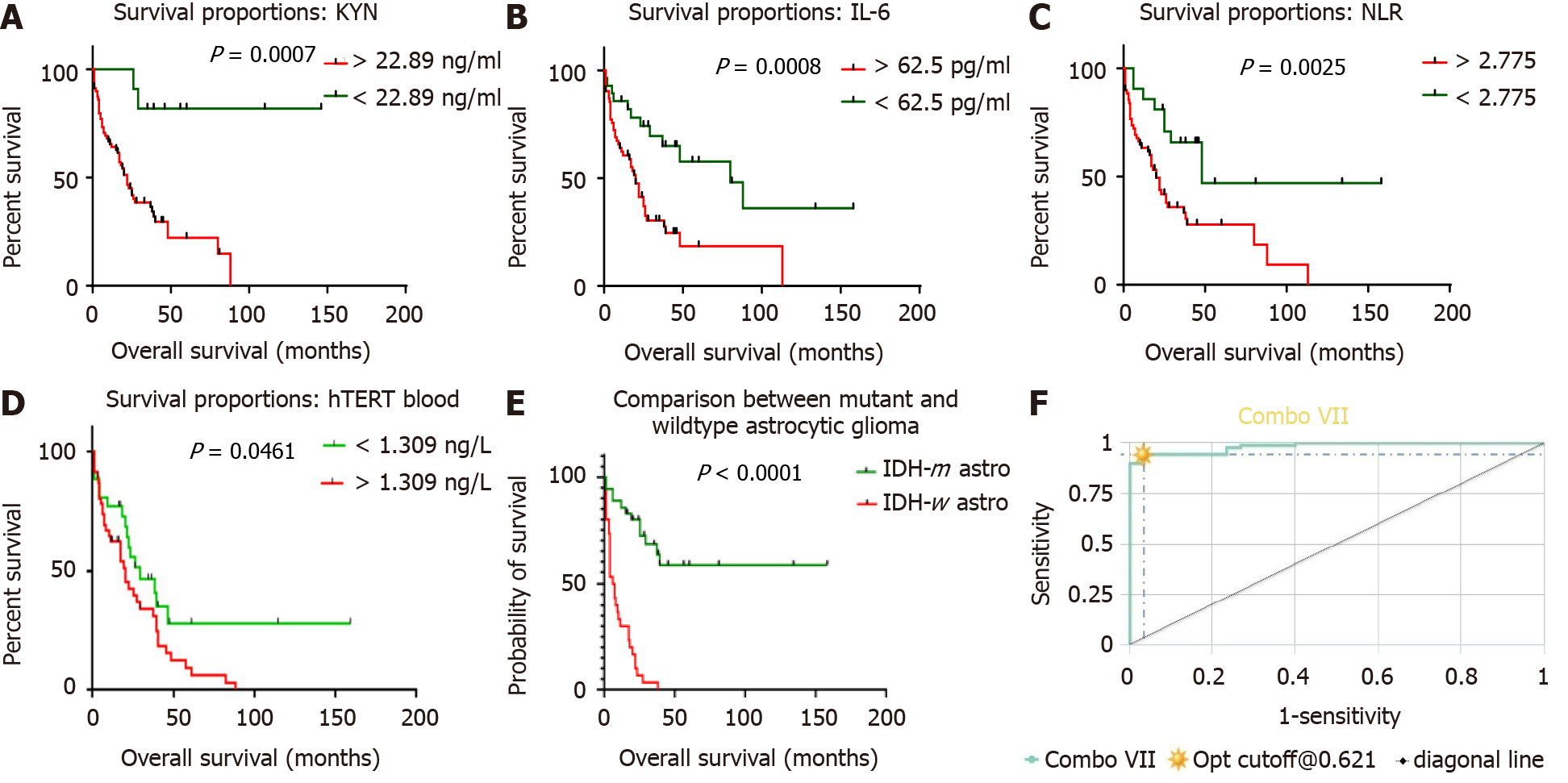Copyright
©The Author(s) 2021.
World J Clin Oncol. Oct 24, 2021; 12(10): 947-959
Published online Oct 24, 2021. doi: 10.5306/wjco.v12.i10.947
Published online Oct 24, 2021. doi: 10.5306/wjco.v12.i10.947
Figure 2 Survival curves of circulatory markers kynurenine, interleukin-6, neutrophil-lymphocyte ratio and human telomerase reverse transcriptase(red indicates worse prognosis while green represents favorable prognosis), differential survival between astrocytic isocitrate dehydrogenase-mutant and isocitrate dehydrogenase-wildtype gliomas, combination receiver operating characteristic of the panel of kynurenine, interleukin-6, neutrophil-lymphocyte ratio, and human telomerase reverse transcriptase to achieve increased sensitivity and specificity for predicting overall survival.
A: Kynurenine; B: Interleukin-6; C: Neutrophil-lymphocyte ratio; D: Human telomerase reverse transcriptase; E: Differential survival between astrocytic isocitrate dehydrogenase-mutant and wildtype gliomas; F: Combination receiver operating characteristic of the panel of kynurenine, interleukin-6, neutrophil-lymphocyte ratio, and human telomerase reverse transcriptase to achieve increased sensitivity and specificity for predicting overall survival. KYN: Kynurenine; IL-6: Interleukin-6; hTERT: Human telomerase reverse transcriptase; NLR: Neutrophil- lymphocyte ratio; IDH-m astro: Isocitrate dehydrogenase mutant astrocytic; IDH-w astro: Isocitrate dehydrogenase wildtype astrocytic.
- Citation: Gandhi P, Shrivastava R, Garg N, Sorte SK. Novel molecular panel for evaluating systemic inflammation and survival in therapy naïve glioma patients . World J Clin Oncol 2021; 12(10): 947-959
- URL: https://www.wjgnet.com/2218-4333/full/v12/i10/947.htm
- DOI: https://dx.doi.org/10.5306/wjco.v12.i10.947









